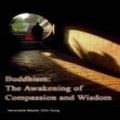Chapter Two: What Is Buddhism?
This question arises in all those who wish to better understand it. Buddhism is a most virtuous and perfect education directed by the Buddha towards all sentient beings in the universe. This education covers a boundless range of phenomena and principles that is much broader than what is currently studied in modern universities. In regards to time, it encompasses the past, present and future. In regards to space, it encompasses everything from our daily lives to the infinite universe. Buddhism is an education of the wisdom and understanding of life and the universe. It is not a religion. The teachings of Confucius concerns one lifetime. The teachings of the Buddha cover infinite lifetimes.
How can we tell that Buddhism is an education? Today, the terms teacher and student are only used in school. However, we call Buddha Shakyamuni, our Original Teacher. We call ourselves students, as did our predecessors in ancient China. This is unlike religions in which the god and his or her disciples do not have a teacher-student relationship, but rather a parent-child relationship. In Buddhism, however, it is clearly stated that the Buddha is the teacher and we are the students. Bodhisattvas and we are classmates; they were the Buddha's former students while we are his current ones. Furthermore, a monk or nun is called He-shang, which is the transliteration of the Sanskrit word meaning a direct mentor who provides teachings and acts as our personal guide. We share a close teacher-student relationship with this individual. Temples, or Way Places, have only one He-shang. Teachers who teach on behalf of the He-shang are called Asheli. Their speech and behavior can be models for us to follow. Others who do not directly teach would be called Dharma masters or Fashi. They are like teachers whose lectures we do not attend or those who do not directly teach us. All these terms are characteristics of education and are not found in religion.
For further examples of how Buddhism is an education, we can examine Chinese way places where the activities are held. The way place is an educational institution combining Buddhist teaching and art, similar to the combination of a modern school and a museum. Nowadays, people pursue the arts in everything. Buddhism, however, practiced artistic teaching as early as three thousand years ago.
The staff organization of the way place further illustrates the similarity to modern schools. The He-shang is equivalent to the principal of the school, deciding policies, making plans for courses of study and employing the teachers. Reporting to the He-shang are three associates or program executives, who are in charge of everything directly related to teaching, advising and disciplining, and general services. In China, a traditional way place was regarded as a Buddhist University. From this administrative structure, we can further see that Buddhism truly is an education.

